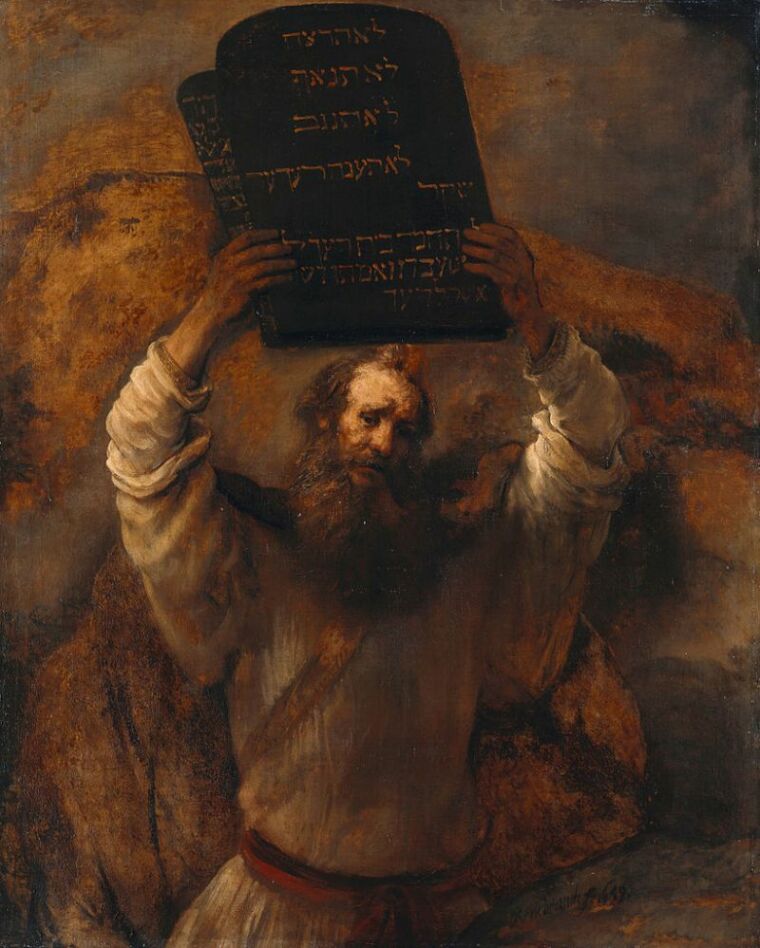How Did Moses "Write" God's Law (and the Pentateuch) at and around Mount Sinai?

Two current, and interrelated, publications delve into the longstanding and complicated question of whether or not Moses was a historical person and/or the authenticity of the Biblical story surrounding Mount Sinai and the 10 Commandments.
A new movie is airing in select theaters since March 14th—titled "The Moses Controversy." The documentary is well-produced in many aspects, but one of its main experts may have some questionable theories—according to a separate archeologist and historian. Such is often the case when analyzing ancient history and/or Christianity.
Dr. Douglas Petrovich (Ph.D) recently published a book titled, "The World's Oldest Alphabet: Hebrew As the Language of the Proto-Consonantal Script." In said book he makes the claim that Moses had access to an alphabet/writing mechanism in order for him to write down God's Law given atop Mount Sinai (according to the record in the Bible). However, there are concerns with the means that Dr. Petrovich arrived at his conclusion—according to Dr. Ronald Stewart (Ph.D), an archeologist, historian, and imaging expert.
Stewart states that the basis of Petrovich being able to ascertain legible language/script characters is faulty. "Dr. Petrovich's investigative computer program's (Power-Point) 400% magnification tool technique allowed his images to be enlarged/expanded so large that it made it lose resolution. The results (of the noted stele artifact) become blurry and make any detail not only indiscernible but indistinguishable as to what he looked at." Stewart claims this makes the book's translation of all of the artifacts he researched and studied incorrect. This false theory then spills over into the brand-new documentary movie regarding Moses.
To test his own theory on the subject, Stewart notes a rebuttal test conducted by a Dr. Nathaniel Greene—who agrees with Stewart in that this magnification procedure seemed to make the stele picture analysis more difficult and blurry than just the normal 100% viewing. Following Greene's test procedure, Dr. Stewart also performed his own similar test—with results which contradict that of Petrovich.
To fully present his own opinions and analysis as this newer interest in Moses is occurring, Dr. Stewart is releasing his own book on the topic, called, "Beyond The World's Oldest Alphabet; Hebrew Memories At Mount Sinai." In addition to the theories stated above, Stewart also has a different interpretation of what is shown regarding some historical engravings in the noteworthy Sinai 115 stele.
"Dr. Petrovich's translation ofthe stele artifact does not depict persons who were directly related to the biblical patriarchs, like Abraham. Rather, these depictions or petroglyphs are "pre-writing Hebrew depictions" of allegedly the 'Pharaoh of the Moses era.'" Stewart also asserts that right below this potential "Pharaoh" is a detailed scene of the Israelites as they cross through the midst of the Red Sea.
The culmination of Stewart's book gives a couple of examples of "pre-writing-Hebrew-depictions" of (allegedly) Moses in a rock carving holding the set of the "10 Commandments" under one arm and his "staff/rod" under the other.
All told, the quest for answers regarding the life of Moses and the Exodus story is alive and well in 2019—even if varying experts have contradictory theories.
–Ken Lambert has been writing for both secular and religious publications for several years. He co-authored the book "Top 10 Most Influential Christians Since the Apostles" and holds a Doctorate in Ministry. He resides in southern New Hampshire.